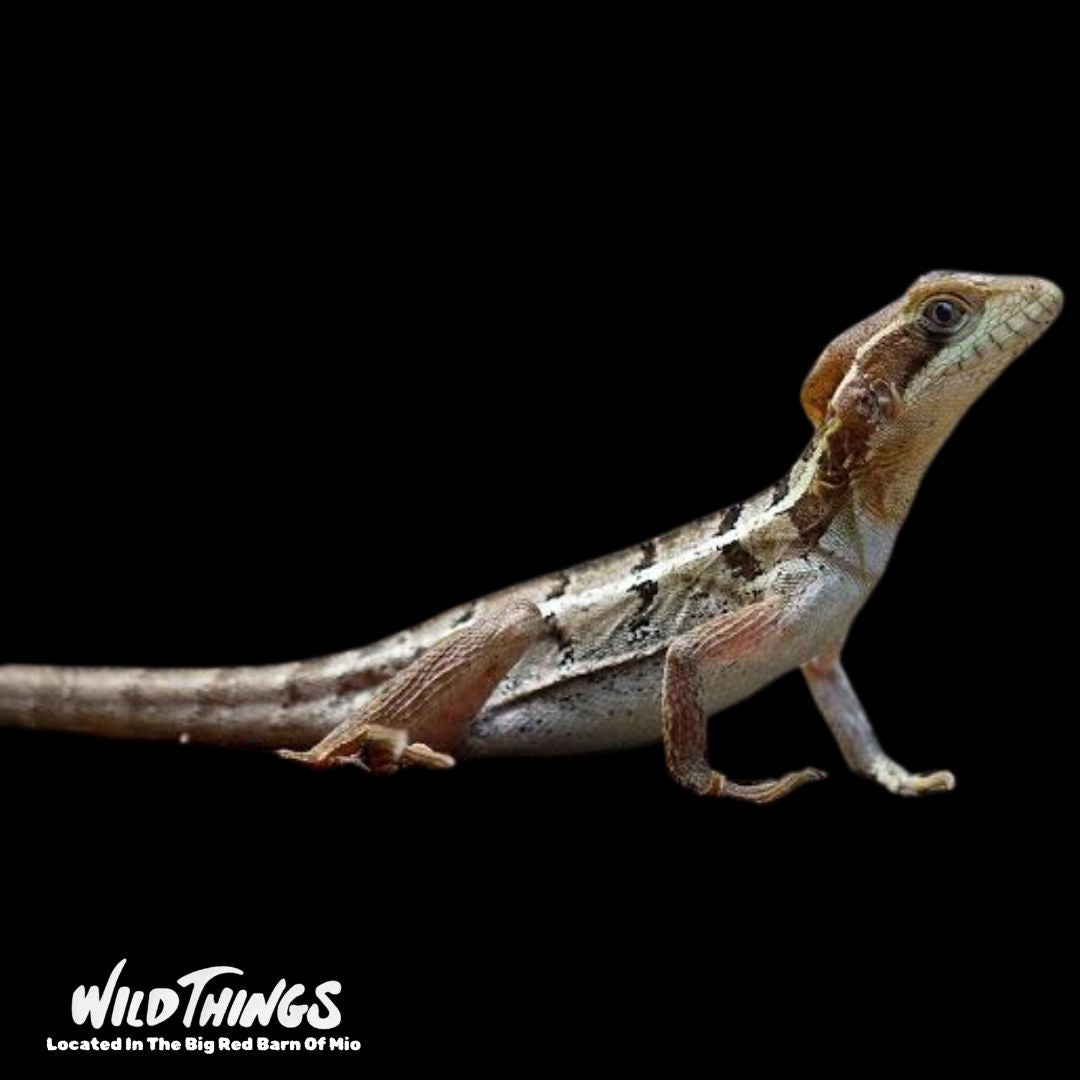AuSable River Outdoors
Juvenile Brown Basilisk
Juvenile Brown Basilisk
Couldn't load pickup availability
Species: Brown Basilisk
Scientific Name: Basiliscus vittatus
Origin: Mexico and Central America. They thrive on the edges of tropical forests and typically live close to water. In places like Guatemala, they are very widespread. Some feral populations have even started popping up in Florida.
Lifespan: 7-8 Years
Size: 24 inches in length for adult males, with females being several inches smaller.
Enclosure Type: The best kind of enclosure for a brown basilisk is a standard vivarium. You can keep them in a tank-style enclosure, but vivariums with front-facing doors and plenty of ventilation are ideal.
Enclosure Size: 48”x 24”x 36”
Substrate: Coarse bark woodchip or a chemical free soil and moss mix
Décor: Hardwood decorations. Large climbing branches and grapevines are always a good choice. These lizards will take full advantage of any climbing surface. Add a few tall and trailing plants as well. The plants should be able to provide some solace away from the light whenever the basilisk needs to cool down. You can also add artificial caves and covers. Some large slate rocks, which retain heat, are good for those times when the lizard needs to warm up.
Water: Brown basilisks need a water dish in their enclosures. But there’s a good chance that you’re not going to see them drink water out of it. Nevertheless, it’s important to include it for good measure. You might observe your lizard climbing into the dish to soak from time to time. Some may even defecate in it. Whatever the case may be, make sure that the dish is always full of clean water (dirty water can quickly lead to disease).
Temperature: On the cool side, ambient temperatures should be around 75°F (which is around room temperature). On the opposite end of the enclosure, use a strong basking lamp to raise temperatures between 90°F and 95°F. Brown basilisks can tolerate lower temperatures at night, but it’s good to create a warm area as well. Where you place your daytime basking spot, use a ceramic heat emitter at night. It should create a warm zone around 80 degrees even when the lights are off.
Humidity: Humidity levels between 55 and 60 percent are a must if you want to keep your brown basilisk healthy. To achieve this, you can mist the enclosure every day. The absorbent substrate should hold onto the moisture to keep the air muggy enough. Don’t rely on your instincts alone when it comes to maintaining the proper humidity! Invest in an accurate hygrometer to make sure that humidity levels are always correct. Checking this will become part of your daily routine.
Lighting: A UVB lamp. These specialty lamps provide UV exposure, which is crucial for calcium synthesis. A 6-percent UVB lamp covering most of the enclosure is ideal.
Type Of Diet: Omnivorous but should consist mainly of insects.
Types Of Food: Crickets, locusts, mealworms, roaches, and grubs make sure that none of the insects you provide are any bigger than the space between the lizard’s eyes
Feeding Schedule: You can feed these lizards small meals daily. Feed them as much as they can consume in one sitting.
Supplements: Calcium and vitamin powders which are dusted onto the live food. It is also helpful if any live food is fed on a nutrient rich diet before being fed to your basilisk.
Share

